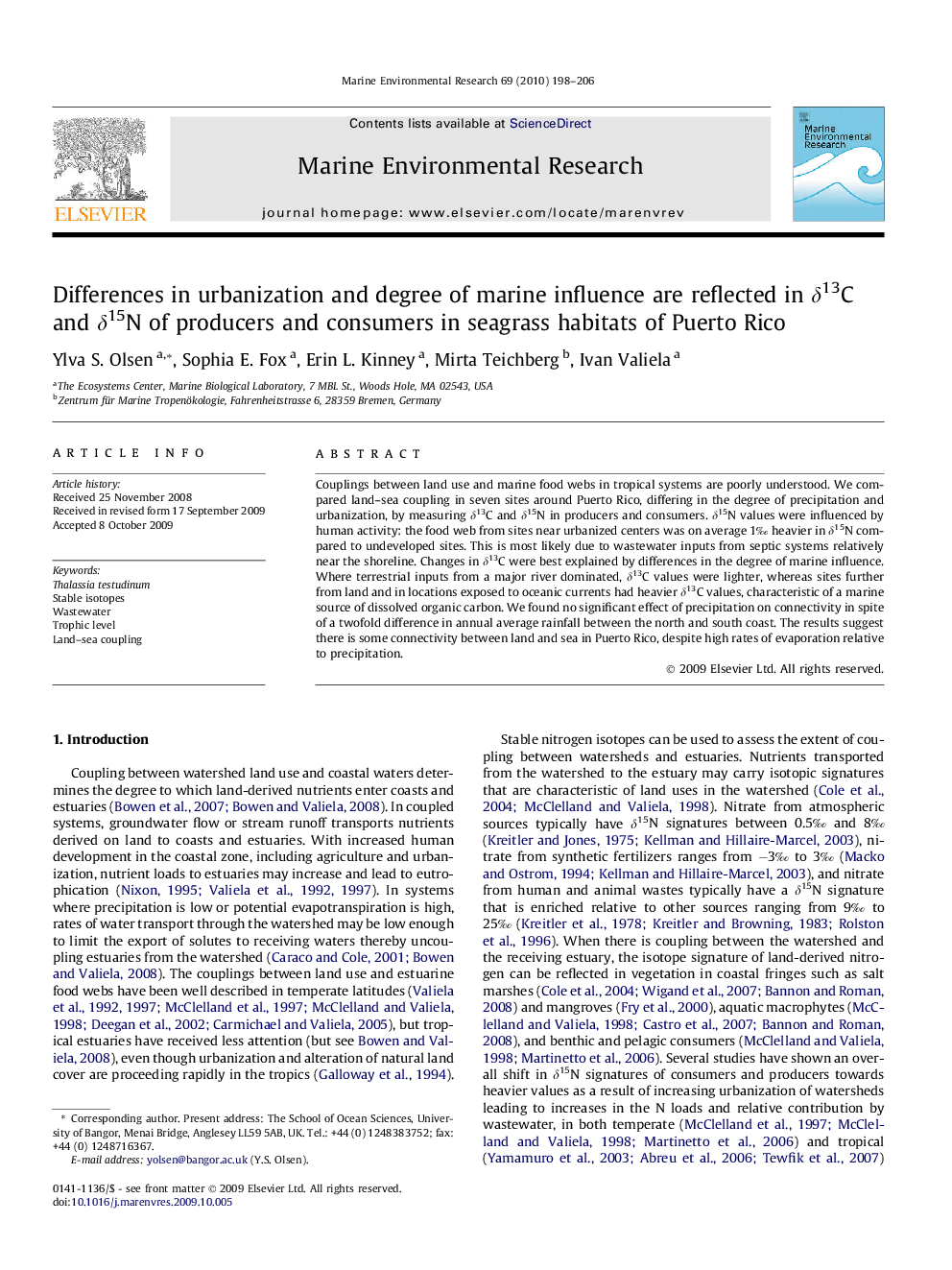| Article ID | Journal | Published Year | Pages | File Type |
|---|---|---|---|---|
| 4551258 | Marine Environmental Research | 2010 | 9 Pages |
Abstract
Couplings between land use and marine food webs in tropical systems are poorly understood. We compared land-sea coupling in seven sites around Puerto Rico, differing in the degree of precipitation and urbanization, by measuring δ13C and δ15N in producers and consumers. δ15N values were influenced by human activity: the food web from sites near urbanized centers was on average 1Ⱐheavier in δ15N compared to undeveloped sites. This is most likely due to wastewater inputs from septic systems relatively near the shoreline. Changes in δ13C were best explained by differences in the degree of marine influence. Where terrestrial inputs from a major river dominated, δ13C values were lighter, whereas sites further from land and in locations exposed to oceanic currents had heavier δ13C values, characteristic of a marine source of dissolved organic carbon. We found no significant effect of precipitation on connectivity in spite of a twofold difference in annual average rainfall between the north and south coast. The results suggest there is some connectivity between land and sea in Puerto Rico, despite high rates of evaporation relative to precipitation.
Related Topics
Physical Sciences and Engineering
Earth and Planetary Sciences
Oceanography
Authors
Ylva S. Olsen, Sophia E. Fox, Erin L. Kinney, Mirta Teichberg, Ivan Valiela,
